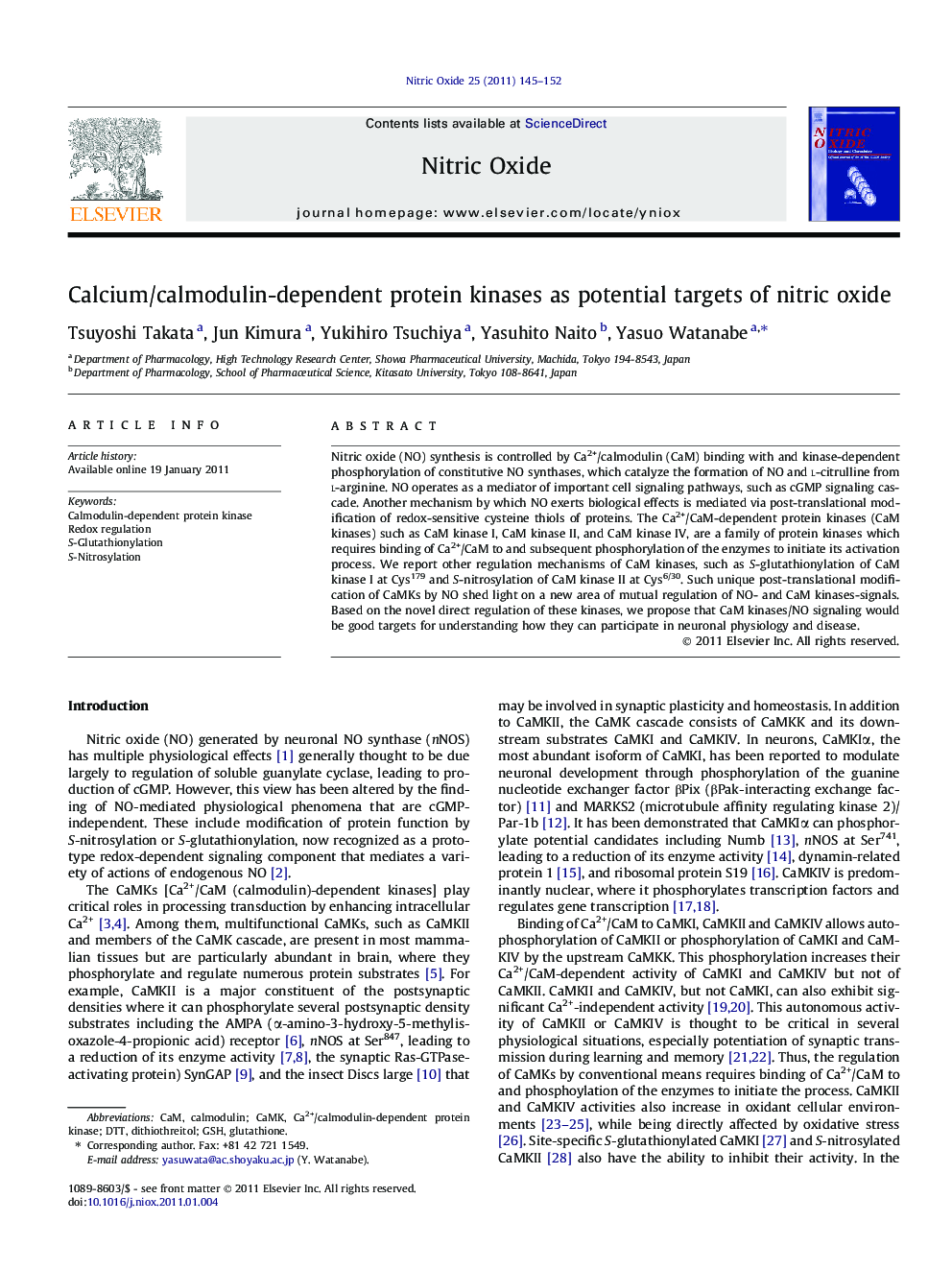| Article ID | Journal | Published Year | Pages | File Type |
|---|---|---|---|---|
| 2001611 | Nitric Oxide | 2011 | 8 Pages |
Nitric oxide (NO) synthesis is controlled by Ca2+/calmodulin (CaM) binding with and kinase-dependent phosphorylation of constitutive NO synthases, which catalyze the formation of NO and l-citrulline from l-arginine. NO operates as a mediator of important cell signaling pathways, such as cGMP signaling cascade. Another mechanism by which NO exerts biological effects is mediated via post-translational modification of redox-sensitive cysteine thiols of proteins. The Ca2+/CaM-dependent protein kinases (CaM kinases) such as CaM kinase I, CaM kinase II, and CaM kinase IV, are a family of protein kinases which requires binding of Ca2+/CaM to and subsequent phosphorylation of the enzymes to initiate its activation process. We report other regulation mechanisms of CaM kinases, such as S-glutathionylation of CaM kinase I at Cys179 and S-nitrosylation of CaM kinase II at Cys6/30. Such unique post-translational modification of CaMKs by NO shed light on a new area of mutual regulation of NO- and CaM kinases-signals. Based on the novel direct regulation of these kinases, we propose that CaM kinases/NO signaling would be good targets for understanding how they can participate in neuronal physiology and disease.
